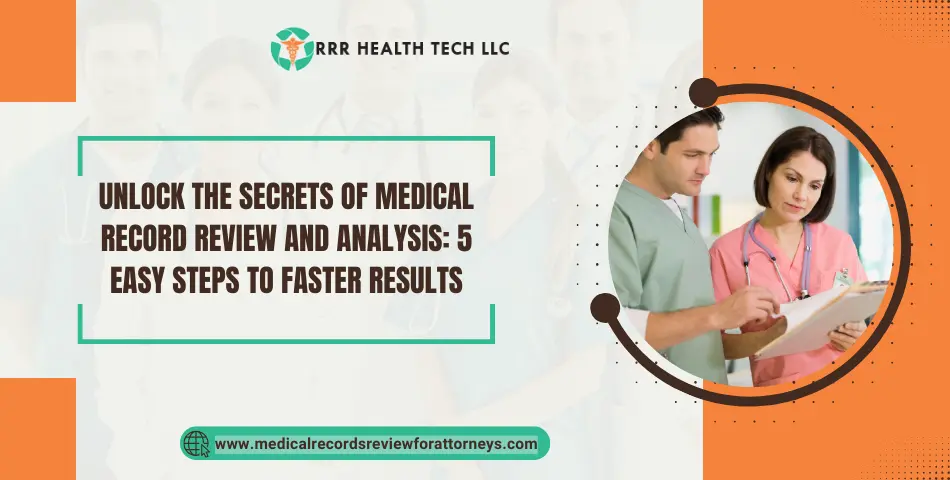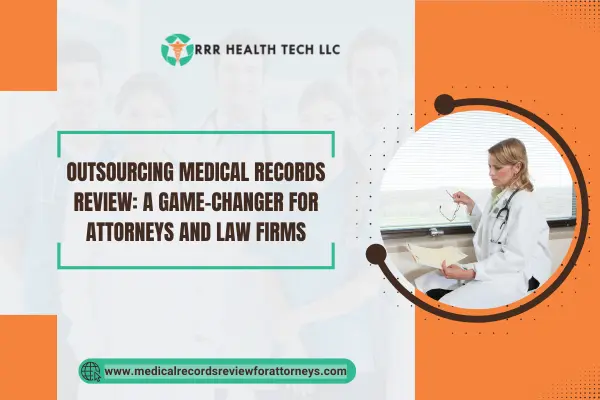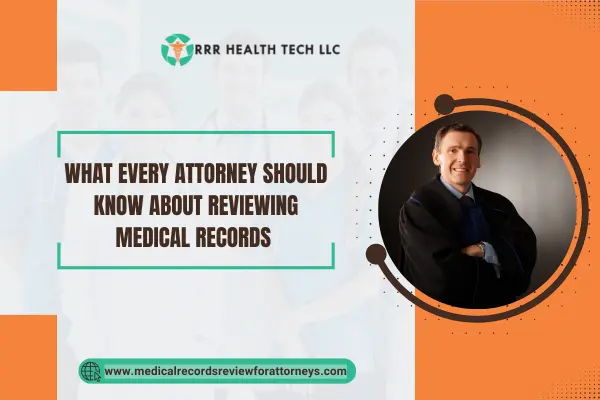
Introduction
Healthcare and law both need the medical record review and analysis. It is a process that involves going through patient files to check if they are right, complete and conform regulatory requirements. In healthcare, comprehensive medical record reviews are essential for quality patient care as well as accurate billing.
Evidence from these reviews in circles of law can be brought up as a proof for cases such as doctors’ carelessness or injuries resulting from an accident. The speed of reviewing medical records has pronounced effects on success rates in any sector thus the need to emphasize on effective, accurate review techniques.
Purpose of Medical Record Review and analysis
For healthcare providers and attorneys, quality care and maintaining accurate records are important.
Step-by-Step Process Involved in Medical Record Review and analysis
Step 1: Collection and Organization of Medical Records
- Collect medical records from different sources and ensure you have a copy of all the relevant ones. This includes hospital records, doctor’s notes, lab results, and imaging studies.
- Sort all records in chronological order or by type for an easy understanding.
Step 2: Initial Review for Relevance and Completeness
- Do a preliminary review to establish if these documents are relevant to the case being dealt with.
- Look for any missing data or incomplete fields that may require further investigation.
Step 3: In-depth Analysis of Medical Data
- Go through the medical information to know the diagnosis, treatment given and outcome of the patient.
- Watch out for deviations from standard care protocols along with inconsistencies in patient’s health history.
Step 4: Identification of Key Findings and Issues
- Find things like possible medical mishaps, treatment differences and major health matters.
- Outline central details necessary in supporting legal actions, claims against insurance providers and clinical decisions.
To succeed in the medical record review process, you must be well versed with medial terminologies and use an analytical approach to ensure accurate and meaningful findings.
Challenges Faced in Achieving Timely Medical Record Review and analysis
Typically, reviewers often experience major barriers that can slow down the process of reviewing medical records. A few examples of such obstacles are:
- Voluminous or Disorganized Documentation Leading to Delays: This is where high volume patients’ records especially when unorganized increases TATs (Turnaround Time). For example, if a record is arranged without any order of chronology, it might be hard for the reviewers to conveniently retrieve the patient’s history or treatment progress.
- Readability Issues: Extracting necessary information from handwritten notes or poorly scanned documents becomes difficult as it slows down the review process.
- Complexity of Medical Data: Complex cases with multiple laboratory results, imaging studies and consultation notes need more time for careful analysis.
- Inconsistent Terminology: Differences in medical terms and abbreviations may lead to confusion prompting clarifications that take longer periods of time.
Therefore, these are all elements that drastically affect MRR efficiency necessitating ways in which their impacts can be reduced.
Fast-Track Your Case: Prompt Medical Record Review Services
The Importance of Timeliness in Different Use Cases of Medical Record Review and Analysis
Timeliness is crucial in medical record reviews, but its significance varies depending on the situation. Here’s why it matters in two specific scenarios:
1. Medical Record Review for Attorneys
To avoid risking the outcome of a case, it is important to evaluate and review it within the timelines. Allowing a quick check up makes sure all information that may be necessary is available to establish a strong case or meet court mandated timelines.
2. Medical Record Review in Healthcare
In healthcare, claims’ reviews need to be timely. Timely completion of reviews helps with fast reimbursements by healthcare providers as well as ensuring compliance with regulatory standards. Conversely, delays lead to financial losses and operational inefficiencies making it essential for reviews to be done accurately and without delay.
Striking the Right Balance: Ensuring Efficiency and Accuracy in Medical Record Review
While performing medical record reviews, it is essential to consider efficacy and preciseness. When the two are balanced, decisions can be made fast enough without harm to data integrity.
Consequences of Under-Reviewing:
- Missed Key Information: Critical details may be overlooked, leading to incorrect conclusions.
- Legal Risks: Inadequate reviews can result in legal ramifications due to missed or misinterpreted data.
Consequences of Over-Reviewing:
- Delays: Excessive scrutiny can prolong the review process, causing delays in decision-making.
- Resource Drain: Over-reviewing can consume valuable resources, both time and personnel, which could be better utilized elsewhere.
Achieving this balance is crucial for maintaining high standards while ensuring timely outcomes.
Conclusion
Keeping a balance between speed and accuracy will require managing medical records fast. By performing rapid but comprehensive review processes, healthcare providers can quickly pick out important information with no superfluous delays.
These actions ensure that legal requirements are met, clinical judgments are supported, and the credibleness of health care services is kept intact too.
FAQs (Frequently Asked Questions)
What is the medical record review and analysis?
The process of reviewing medical records is called a medical record review. This is where a reviewer goes through medical charts to verify if they are complete and accurate, or collect essential medical facts from those records.
How to analyze medical records?
Analyzing medical records means going through all the information about patients, their medical history, treatment procedures administered to them as well as results of tests undertaken on them systematically. The documents need to be arranged chronologically; important incidences identified and any irregularities in the documents checked.
What is the duration of medical records?
Observation Out-Patient Department records are held for three years while In-Patient Department and Medical Legal records are retained for ten years in corporate hospitals.


